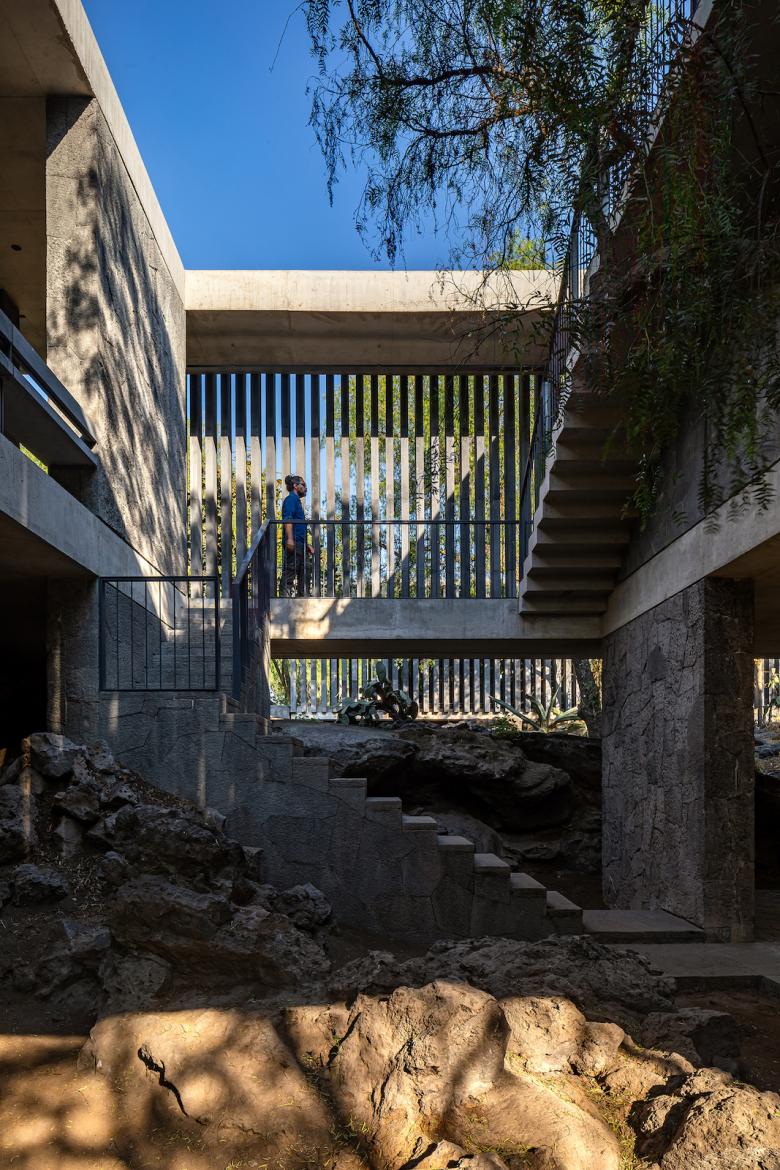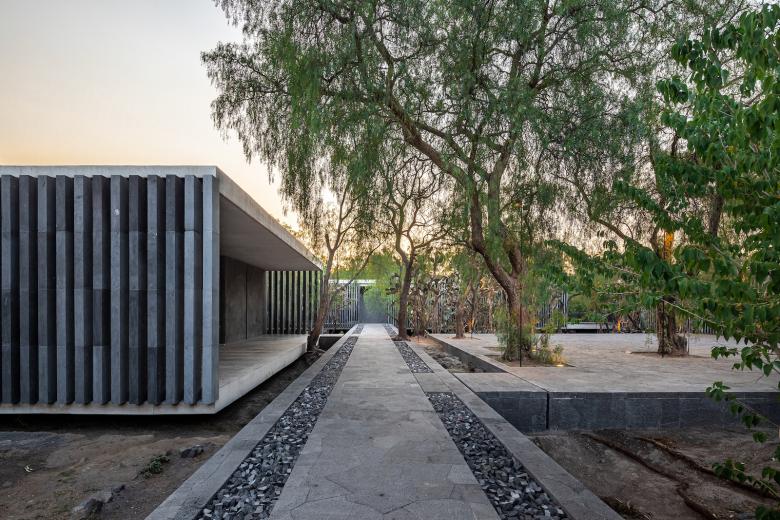2023 MCHAP Winner
Anahuacalli Museum Remodeling and Expansion
The remodeling and expansion of the Anahuacalli Museum in Mexico City by Taller | Mauricio Rocha has been named the winner of the 2023 Mies Crown Hall Americas Prize (MCHAP), the biennial prize that recognizes a built work in the Americas that best embodies architectural excellence.
Location: Mexico City, Mexico
Client: Luis Rodrigo Saldaña Arellano and Luis Roberto Salgado Rodríguez - General Fiduciary Delegate of Banco de México Fiduciary in Trust of the Diego Rivera and Frida Kahlo´s Museums
Architect: Taller |Mauricio Rocha
- Design Principal: Mauricio Rocha Iturbide
The new buildings together with the existing ones create a new public space with a central patio and free corners. By respecting the levels of the central plaza in the new buildings, the quayside and the patio become the articulators between built spaces, leaving below a rugged topography of the volcanic landscape that allows open roofed spaces at certain points to achieve two new open-air workshops. Existing buildings take on a new program or expand it.
The aggregated program has a harmonic relationship with the original buildings, both in height and circulations, which allows the heritage’s perseverance. The circulations keep the same level site-wide which turns them efficient and allow playfulness with the topography, creating different patterns within the landscape.
The configuration generates a game of light and shadows, and visual lines that adapts itself to the general geometry of the buildings and the landscape. The museum turns into an introspection lived towards the exterior space.
The great challenge of building in the ecological reserve, which is one of the few examples where its ecosystem has not been altered, with the least possible impact and that the intervention manages to be a linker and not an aggressor. The new buildings are made of volcanic stone in their basement, concrete slabs, walls and latticework.
The Anahuacalli begins with a hard square with a submerged patio 45cm from the general surface with buildings that make it up with freed corners. Diego Rivera started the central building that was his studio and where he housed his most important pre-Hispanic pieces, Diego Rivera died in 1957. Juan O'Gorman and Ruth Rivera decided to continue the project , in the 1960s they finished the central building and four more buildings that finish forming the central square.
Our project tries to build new buildings in open reading to the trace of the pre-existing buildings and achieve a new relationship to a soft square where a patio emerges that is the fourth part of the submerged patio of the hard square. The new buildings have the same floor and ceiling level as the existing ones, only leaving the main building, which was Diego Rivera's studio, at a different height. To the south is the visiting cellar where the 60,000 pieces that were not previously on display but that the public can now visit are now housed. To the west is the workshop building with a large dance hall that also functions as a multipurpose room for conferences and concerts, porticoes opening onto an internal courtyard, and two rooms for plastic arts and mathematics.
To the north is the office building and to the east it is made up of the pre-existing buildings, achieving an extension to the library.
Just as the pre-existent buildings used the terrains rock in their construction, the extension takes this material and it becomes an ethereal material, that levitates over a lava sea, that contrasts with the massive expression of the historical buildings. The expansion leaves the rock in the air, lifting it over the natural landscape, allowing nature to rule over the spaces beneath the buildings.
The buildings are recessed in their base to achieve less impact with the landscape, the materiality of the new buildings with concrete and volcanic stone slabs in their base, in walls and in the lattice machine cut from 30x15cm pieces. With a height of 90cm, assembled and interwoven, they achieve in their modulation an open lattice with openings that are regulated in view of the landscape. The old warehouse now becomes the maintenance area, construction of museographies and reception of works for exhibitions, the administrative area in a cafeteria, shop and toy library, and the library increases in size.
The areas are always contained and, at the same time, connected to the rest of the urban sprawl, linking the constructed space with its landscape, generating windows to its context.
Sandra Barlcay (Chair): “Mauricio Rocha proposes a typology of independent and permeable volumes, giving continuity to the floor of the existing plaza and, in turn, the rough and irregular topography of the natural lava flow. … the project radically transforms the [O’Gorman and Rivera] complex, revealing the qualities of the ecological reserve that contains it and creating a dynamic space open to the community. … The extension offers the community an unexpected experience that connects them to the place and its roots and generates a sense of belonging for the user and the visitor.”
Alejandro Echeverri: “It is not mainly about buildings — it is about the exceptional soul of the site that the architects masterfully reshape.”
Julie Eizenberg: “The way the museum extension mingles with the landscape speaks volumes about where architecture is headed, and the way it honors the past is fearless, heartfelt, and original.”
Mónica Bertolino: “The Anahuacalli Museum articulates ancestral culture, nature, and the community in an exceptional way. It does so through an architectural intervention that reinterprets and accompanies in a contemporary key the strong presence of the pre-existence of this site.”









